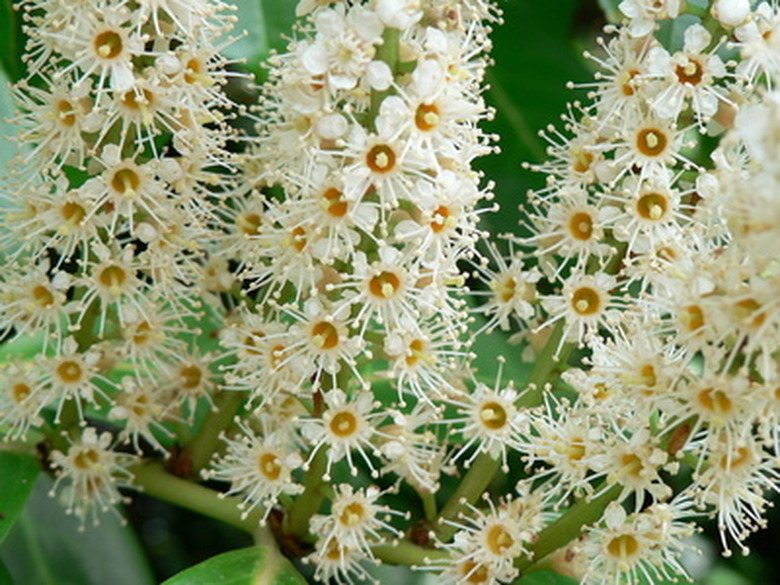Overwatering Carolina Cherry Trees
Most people overwater the Carolina cherry. This native American multi-stemmed shrub easily trains into tree form and proves hardy and drought tolerant once established. It's a favorite with home gardeners in U.S. Department of Agriculture plant hardiness zones 7 through 10. It stands up to pruning and makes a good hedge. The foliage is glossy green and attractive year round. Fruit follows the ample white spring blooms. Although leaves and fruit pits are poisonous to livestock, the black berries appeal to wildlife and form the basis of many wild bird diets.
Water for Growth
From the time a cherry laurel is newly planted through its first year, it needs regular watering to establish itself. Once established the Carolina cherry is drought-tolerant and needs very little watering. So, as your Carolina cherry grows, water less frequently. Letting the tree experience a drought between waterings helps it adapt to less frequent irrigation. A general rule of thumb is to water young drought tolerant trees and shrubs at the peak of the summer once a week or less. Older well established cherry laurels may not need watering at all.
How to Water
Water your Carolina cherry at the drip line and beyond. The drip line is the edge of the leaf and branch canopy, so-called because rain or irrigation water will drip off it and down to the ground. There are a lot of factors involved in figuring out how much water your Carolina cherry is getting. Your watering system delivery, how deep the root zone is and your type of soil all play a part. To find out how long you need to water your cherry laurel, watch and time how fast water soaks into your soil. Using a soil probe is the easiest way to do this. Water needs to get to the full depth of your cherry laurel's root zone. Watering any deeper is not necessary. Once you have figured out how long it takes to water the entire root zone, water for that amount of time every time. Over-irrigation can cause chlorosis, so water established cherry laurels infrequently if at all.
Chlorosis
Chlorosis is a yellowing of the Carolina cherry's leaves. The yellowing indicates a lack of chlorophyll, the green pigment needed for photosynthesis. Overwatering and poor drainage can bring on Iron chlorosis. When the soil drains poorly the cherry laurel's roots sit in soggy conditions. The lack of oxygen that is a result of the extra water inhibits the Carolina cherry's root function and iron absorption. Prolonged chlorosis can cause your Carolina cherry to die.
Prevention
Avoid planting the Carolina cherry in soggy areas or areas with compacted soil where irrigation water will stand. Know your soil type so you can water properly. Heavy soils hold water while light, sandy soils drain quickly. Once the tree is past its first growing season, water infrequently deeply enough to fill the root zone and allow the tree to dry out completely between waterings.


